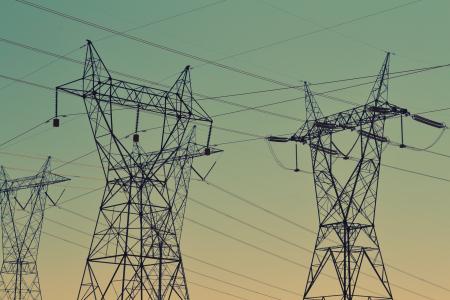The Baynes Hydropower Project is situated along the Cunene River, 185 km downstream of Ruacana at the border separating the two countries. The project involves the construction of a hydropower dam on the Cunene River, 48 km downstream of the Epupa Falls. It is envisaged that the Baynes mid-merit/peaking power station’s capacity will be in the range of 600 MW, which will be shared equally by Namibia and Angola. Like Ruacana Power Station, the new dam will function as a mid-merit peaking station, which will help to offset costly power imports during peak hours. During the wet season the Baynes Power Station is predicted to run at full capacity, while during the dry season the generators will generate at maximum during mid-merit/peak periods only, whilst 71 MW would be generated during the off-peak periods.
The Baynes Dam will be 200 meters high and will permanently flood an area of approximately 19 km2 with an estimated maximum of 57 km2 at peak level. The dam will be constructed to achieve a reservoir water level at a maximum of 580m, ensuring the foot of the Epupa Falls, which is at an elevation of 580 metres, is not flooded, even when the reservoir is at full supply capacity. The area inundated by the reservoir will hold 2,650 million m³ of water which is about half of the river's annual runoff of 5,000 million m³. The structure of the dam consists of a rock fill embankment with a concrete face. In total, the rock fill will be 12 million cubic meters. The water face of the wall is lined with a concrete face that is about 80 centimeters thick at the bottom and around 30 centimeters at the top and provides the water tightness to the dam wall.
At the same site turbines will be installed along with a power plant, switch plant and ancillary structures. Power lines will be constructed from the plant to the nearest substations in Angola and Namibia (subject to a separate EIA process). The Baynes Hydropower Station will not affect the Epupa Falls as these are upstream but may impact the river downstream including the river mouth.
The project’s initial studies were conducted between 1995 and 1998. Detailed techno-economic and environmental feasibility studies were conducted from 2009 to 2012. The Permanent Joint Technical Commission (PJTC) appointed the Cunene Consortium (CC) to perform a Techno-Economic Feasibility Study (TEFS) on the Baynes Hydropower Project. Environmental Resources Management (ERM) was appointed to conduct and independent Environmental and Social Impact Assessment (ESIA), in 2009, in parallel and in close consultation with the techno-economic study. Both TEFS and ESIA are currently being updated. This will also help in the identification of the funding model. The hydropower station will also connect the border of the two countries as the dam wall itself will form a bridge between Angola and Namibia.
Project oversight is provided by the PJTC, and the project implementation partners include the power utilities of the two countries, namely Namibia Power Corporation (NamPower) and Rede Nacional de Transporte de Electricidade (RNT) of Angola, who have mandated the Southern African Power Pool (SAPP) to coordinate the transmission interconnection.
With regards to the road access infrastructure, the Roads Authority of Namibia, and INEA (Angolan Roads Authority) have commissioned detailed environmental and technical studies.
The project objectives are as follows:
- Provide clean energy and contributing to sustainable industrial and economic development in the two countries.
- Reduce the current levels of power deficits in the two countries, and increase access to electricity to various parts of the two countries
- Contribute to increased SAPP Energy Market capacity

